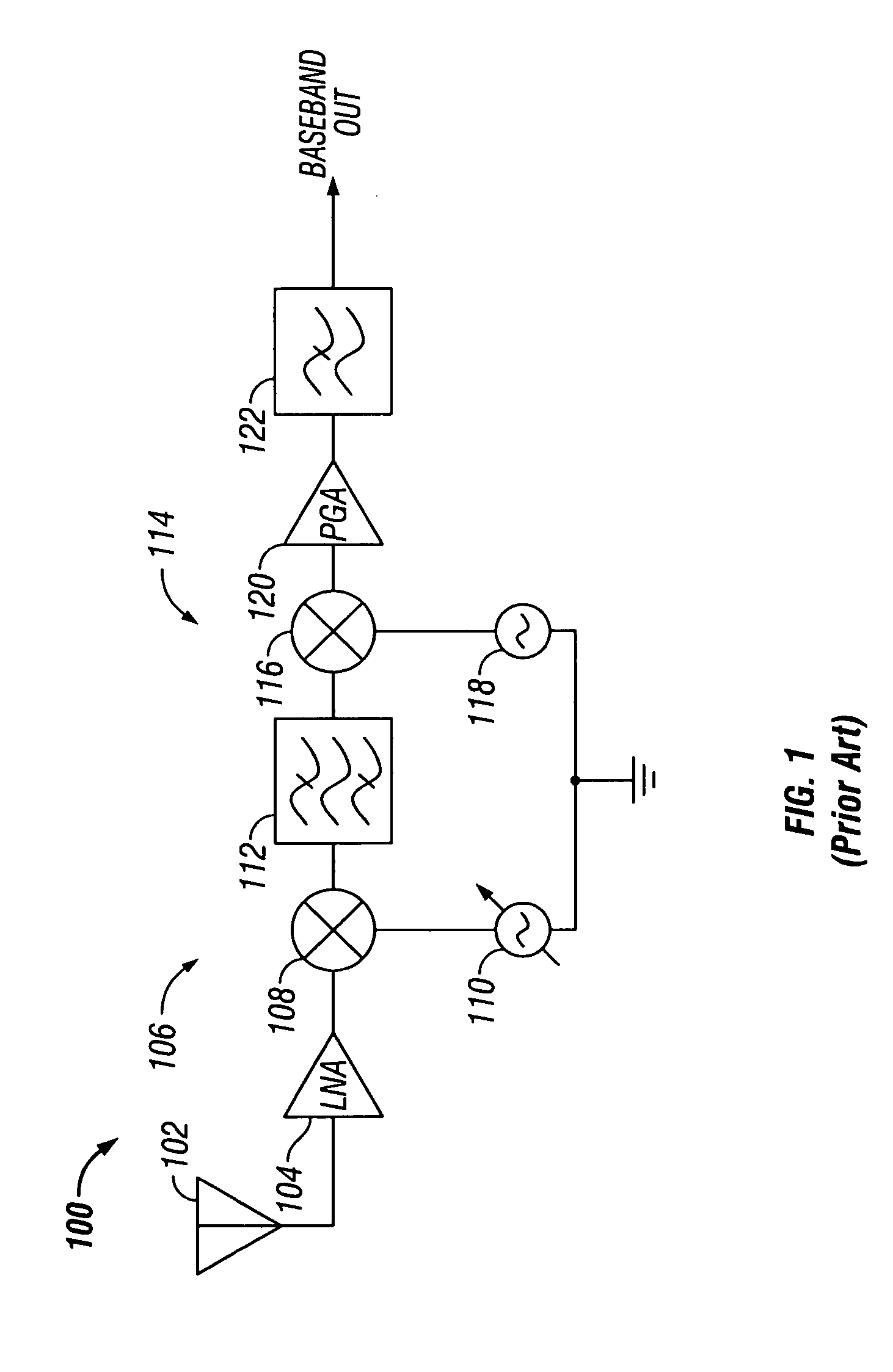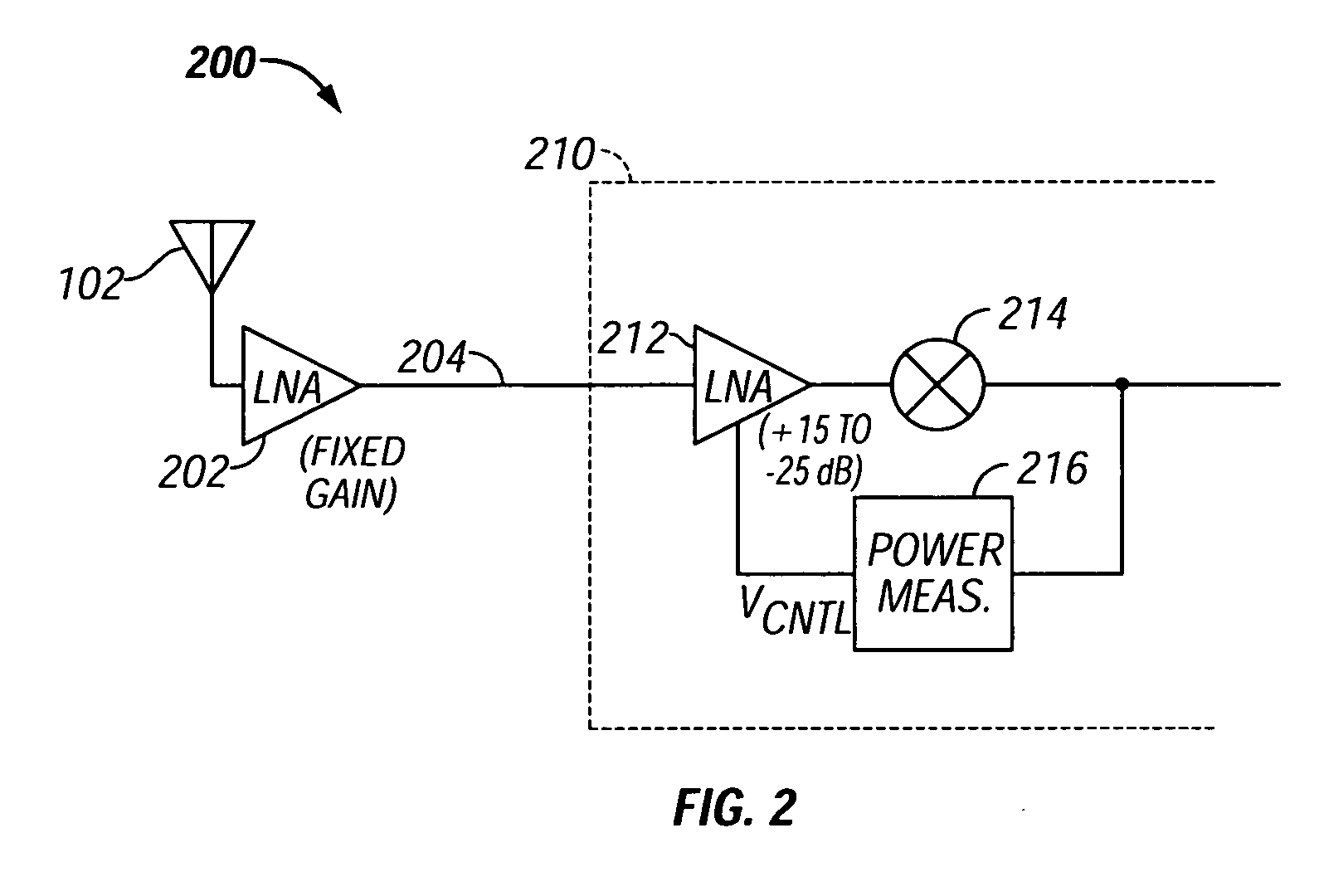Radio frequency low noise amplifier with automatic gain control
a low-noise amplifier and automatic gain control technology, applied in the field of amplifiers, can solve the problems of low-noise amplifiers, add to system costs, and inability to implement resistor t-networks accurately in conventional, low-cost cmos integrated circuits
- Summary
- Abstract
- Description
- Claims
- Application Information
AI Technical Summary
Problems solved by technology
Method used
Image
Examples
Embodiment Construction
The following detailed description is merely exemplary in nature and is not intended to limit the invention or the application and uses of the invention. Furthermore, there is no intention to be bound by any expressed or implied theory presented in the preceding technical field, background, brief summary or the following detailed description.
FIG. 1 illustrates in partial block diagram and partial schematic form a radio receiver 100 known in the prior art. Receiver 100 is a superheterodyne receiver that includes generally an antenna 102, a low noise amplifier labeled “LNA”104, an RF to IF mixer 106, a bandpass filter 112, an IF to baseband mixer 114, a programmable gain amplifier labeled “PGA”120, and a lowpass filter 122. Amplifier 104 has an input terminal connected to antenna 102, and an output terminal, and amplifies a broadband signal received on antenna 102 to provide an amplified signal to the output terminal thereof. Mixer 106 mixes the amplified signal to IF as follows. Mi...
PUM
 Login to View More
Login to View More Abstract
Description
Claims
Application Information
 Login to View More
Login to View More - R&D
- Intellectual Property
- Life Sciences
- Materials
- Tech Scout
- Unparalleled Data Quality
- Higher Quality Content
- 60% Fewer Hallucinations
Browse by: Latest US Patents, China's latest patents, Technical Efficacy Thesaurus, Application Domain, Technology Topic, Popular Technical Reports.
© 2025 PatSnap. All rights reserved.Legal|Privacy policy|Modern Slavery Act Transparency Statement|Sitemap|About US| Contact US: help@patsnap.com



